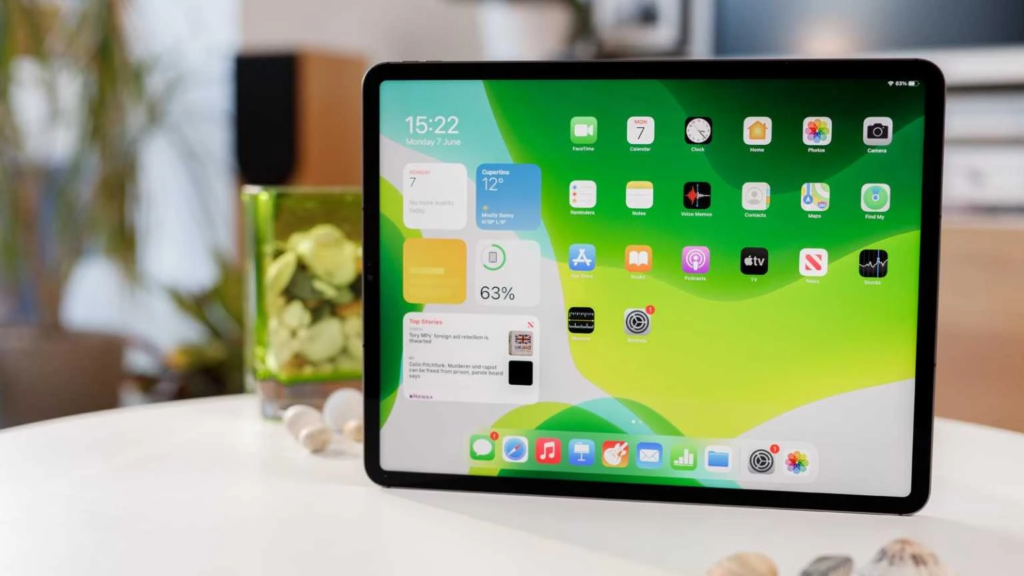Nothing is more frustrating than having your iPad screen go all blank all of a sudden. It can be a problem: whether you are mid-task, trying to keep a child entertained or you just need a moment to catch your breath. If your iPad touch screen is not working, do not panic. It can be restored by several effective solutions. If your screen is dirty, an app is misbehaving, or your charger is faulty, this article will show 10 ways of fixing that. If you follow these methods on any of your iPad models, then you can get things in control immediately.
Clean the Screen Thoroughly
The dirt, dust, or moisture on your iPad’s screen may stop working and stop responding. The device may miss your touch if there is grime or oil buildup. Wipe with a clean microfiber cloth to gently remove the display. Ensure your hands are dry and clean too, wet hands or gloves will stop touch recognition. Usually, this is all it takes to fix the problem.
Force Restart the iPad
If the touch screen freezes and you cannot restart it through the normal process, you may not be able to restart your iPad. A force restart can also help by simply shutting down the iPad even if the screen is not responsive.

For iPads without a Home Button:
- Press and release the volume button closest to the power button.
- Press and release the volume button farthest from the power button.
- Hold the power button until the Apple logo appears.
For iPads with a Home Button:
- Hold both the power button and the home button simultaneously.
- Release when the Apple logo displays.
Remove Screen Protector if Necessary
A poor or worse screen protector application due to poor quality screen, or screen protector damages can stop the screen from being touch sensitive. If the screen itself is cracked or peeling, you will need to remove the protector and test the screen’s response. This solves most of the touch issues, especially on older protectors.
Avoid Extreme Temperatures
Your iPad is prone to malfunction with high or low temperatures. Your iPad may freeze, turn black on display, or would not even turn on in response to extreme heat. If it happens, unplug it and move it to a cooler place until it warms back up. Do not let the heat go to your head by playing under direct sunlight, taking breaks between sessions, or turning on Wi-Fi instead of mobile data.
Inspect the Charger
Your iPad’s touch responsiveness can be messed up by a failed charger. If your screen stops working while it is charging, try disconnecting the charger to see if that helps. Do not use third-party or damaged chargers because they can cause touch issues. If that is not possible, replace the charger with an official or MFi-certified charger.
Use Touch Accommodations Feature
Inside iPadOS, there is a Touch Accommodations feature that tweaks how the screen responds to presses and gestures. If your touch screen behaves erratically, this feature will be handy for you.
To enable it:
- Go to Settings and tap Accessibility.
- Under Physical and Motor, select Touch.
- Turn on the Touch Accommodations toggle and customize the settings as needed.
Uninstall Problematic Apps
Sometimes an issue with what you are doing with the app freezes your iPad and you may have to troubleshoot to find that the problem is with that app. In that case, check whether the app can be updated from the App Store. If you are still having trouble, uninstall and reinstall the app. If it does not respond, then just delete the app to stop the disruption.
Free Up iPad Storage
If your iPad becomes short of storage, and you might have a touch response issue. Under Storage under Settings > General > iPad Storage, you can check storage. However, if you cannot spare more space, delete apps that you do not need, photos that you have already taken, or videos. You can also link your iPad to a Mac to handle storage using Finder.
Update iPadOS
Outdated software can lead to touchscreen glitches. Apple regularly releases updates to fix bugs and improve performance. To update:
- Connect your iPad to a Mac or PC.
- On macOS Catalina or later, open Finder. On older Macs or PCs, use iTunes.
- Click on your iPad under Locations.
- Select Check for Update and follow the instructions to install the latest iPadOS version.
Factory Reset as a Last Resort
If all else fails, a factory reset may resolve complex software issues. However, this step will erase all data, so back up your iPad first.
To perform a factory reset:
- Connect your iPad to a Mac using a compatible cable.
- In Finder, click on your iPad under Locations.
- Select Back Up Now to save your data.
- Once the backup completes, click Restore iPad and confirm.
After the reset, your iPad will display a welcome screen, ready for setup.

Seek Professional Help if Needed
If none of these fixes work for you, there is a chance that your iPad may have one (or more) hardware issues. If the Mac is in such a condition that requires expert diagnosis, go to the Apple Store or an authorized service center.






